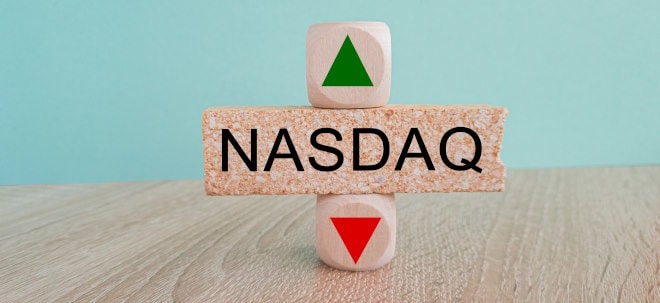seitdem fahre ich Fiat Bamibino. ;)
Wer sich für die DMC-Geschichte interessiert, hier ein Super-link in deutsch dazu:
http://www.eueu.de/1ingoborsch/geschichte.html
sowie einen US-Artikel. Kennt noch jemand Walter Treser?

The sting operation mounted by the FBI -- in conjunction with the DEA, Customs Service, and the police departments of Ventura and Los Angeles, California -- sounded like a plot straight out of Miami Vice. But this was the real deal, and it snared the legendary John Zachary DeLorean, a man People Weekly described as the Auto Prince, the "Detroit dream merchant." On October 26, 1982, DeLorean was arrested for putting up $1.8 million to bring 100 kilos of cocaine into the United States. DeLorean stood to make $24 million from the deal, and he told a confidential informant (CI) for the FBI that he intended using the proceeds to salvage his dream, the DeLorean Motor Company, which faced ruin.
The son of a Ford factory worker, DeLorean grew up on Detroit's east side during the Depression. Earning an engineering degree at the Lawrence Institute of Technology and, later, a couple of master's degrees in engineering and business, he worked for Chrysler and Packard Motor Car Company before moving to General Motors, where he made his mark in the early Sixties by creating the Pontiac GTO. The GTO was immensely popular with young drivers, and nearly 250,000 of the fast and classy "hot rods" were sold in the first five years of production. Pontiac's sales tripled, and before long DeLorean was in charge of North American operations, bringing home a $650,000 annual salary.
"People either loved him or hated him," said business journalist J. Patrick Wright, who penned the 1979 DeLorean memoir, On A Clear Day You Can See General Motors. DeLorean was vain, impulsive and sometimes overbearing. He wore trendy clothes and earned a reputation as a swinger after his second divorce, when he started dating celebrity beauties like Ursula Andress and Raquel Welch. In 1972 he met supermodel Christina Ferrare, who was half his age, and she moved in with him. Detroit did not approve of DeLorean's lifestyle, so in 1973 he "fired GM" and set off on his own. The DeLorean myth grew. He was a maverick, a risk taker, and he had bold dreams.
Marrying Christina, DeLorean dabbled in real estate, car dealerships and miniature race cars. But what he really wanted to do was start his own car company and break the hold that Ford, Chrysler and GM had on the American auto industry. The sporty DMC-12, he thought, would do the trick. The sleek stainless-steel sports car with the distinctive gull-wing doors boasted a 130hp Renault engine and could go from zero to 60mph in eight seconds.
DeLorean needed $175 million to finance his dream. Over one hundred investors, including Johnny Carson and Sammy Davis, Jr., put over $12 million into a partnership for research and development while the British government produced $156 million in grants and loans in return for DeLorean locating the DMC factory in Northern Ireland. (Britain liked the idea of creating 2,000 new jobs in a region suffering a 20 percent unemployment rate.) DeLorean risked relatively little of his own money -- $700,000 is the best estimate -- but he seemed to have made his dream come true. The Auto Prince lived like royalty in a $7.2 million, 20-room Fifth Avenue duplex, a $3.5 million estate in New Jersey and a $4 million California ranch. He made sure DMC's $25,000-a-month New York offices were located in a skyscraper that towered as high as the nearby GM building. He paid himself nearly half a million dollars a year and his estimated value in 1982 was $28 million. John Z. DeLorean was a real American success story, the poor boy who made good. Or so it appeared.
Unfortunately, the DMC-12 racked up mediocre sales figures. Entering the market in 1981, it faced stiff competition from Datsun, Mazda and Porsche sports cars. At $26,000, it cost $8,000 more than the Chevrolet Corvette. And of course a recession during 1981-82 didn't help, either. DeLorean expected to sell 12,000 cars a year; in the first six months only 3,000 DMC-12s were purchased. (A pair of 24-karat solid gold cars bearing $85,000 price tags were made for an American Express Christmas catalog; one resides in a glass showcase in the lobby of a Snyder, Texas bank and the other is in a Reno,Nevada car museum.) By February 1982 the DMC factory was in receivership, and in October of that year the British government ordered it shut down. DeLorean needed $17 million in a hurry to save his business. In desperation he entered into a drug-smuggling scheme, and in so doing walked right into a FBI sting operation designed to nab a smuggler named William Hetrick.
Hetrick was suspected of flying cocaine in from Colombia and moving it through the offices of a company called Morgan Aviation at Mojave Airport, ninety miles out of Los Angeles. He was looking for a bank that would launder his ill-gotten gains. The FBI confidential informant hooked Hetrick up with one agent posing as a bank officer and another who posed as a drug distributor. DeLorean then approached the CI, and was filmed and recorded at meetings in Washington D.C.'s L'Enfant Plaza Hotel as well as L.A.'s Bel Air Sands and the Sheraton Plaza. Hetrick was arrested after exchanging the cocaine for money; DeLorean was was taken into custody the following day when he flew into L.A. from New York. Ironically, he just missed a call from a banker who wanted to offer a legitimate $200 million loan that would have saved DMC, which shut its doors for good owing creditors $180 million. DeLorean's dream had turned to dust -- and left a lot of investors burned.
Interviewed by Rolling Stone's Aaron Latham in 1983, DeLorean claimed that he was trying to get a loan using stock in a shell company as collateral, and that he tried to back out of the deal after discovering that drugs were involved. At that point, according to DeLorean, the lives of his kids were threatened. Furthermore, the money paid for the drugs brought in by Hetrick was provided by the government. DeLorean suggested that the government was out to destroy him because the Big Three automakers wanted to see his enterprise fail; at other times he surmised that either the British government or the Irish Republican Army had set him up.
In 1984, DeLorean was acquitted of all charges after a federal judge ruled that the FBI operation had been a clear case of entrapment. He became a born-again Christian and wrote his autobiography. But in April, 1985 Christina divorced him, and that September a federal grand jury indicted him for income tax evasion and mail and wire fraud on evidence that he had bilked DMC investors, siphoning the funds into his private bank account. Though never convicted, DeLorean was ordered to reimburse creditors to the tune of $9 million. In 1995 a jury ordered him to pay the law firm of Morganroth and Morganroth $10.3 million in unpaid legal fees. In 1998 a New York jury ruled that DeLorean's accounting firm owed DMC investors $46 million, plus $65 million in interest.
It is believed that a total of 8,563 DMC-12s were built. Approximately 6,000 of them still exist today. |


 Thread abonnieren
Thread abonnieren



 Boxenbauer
Boxenbauer